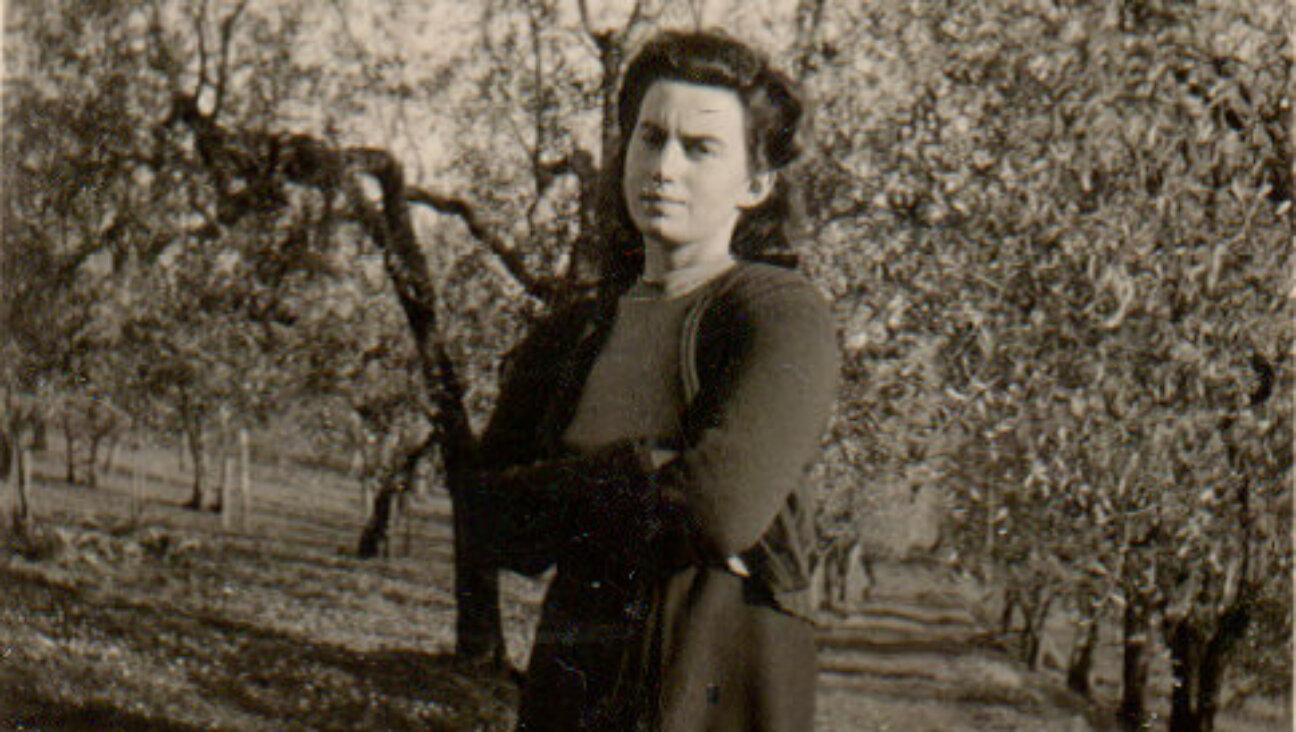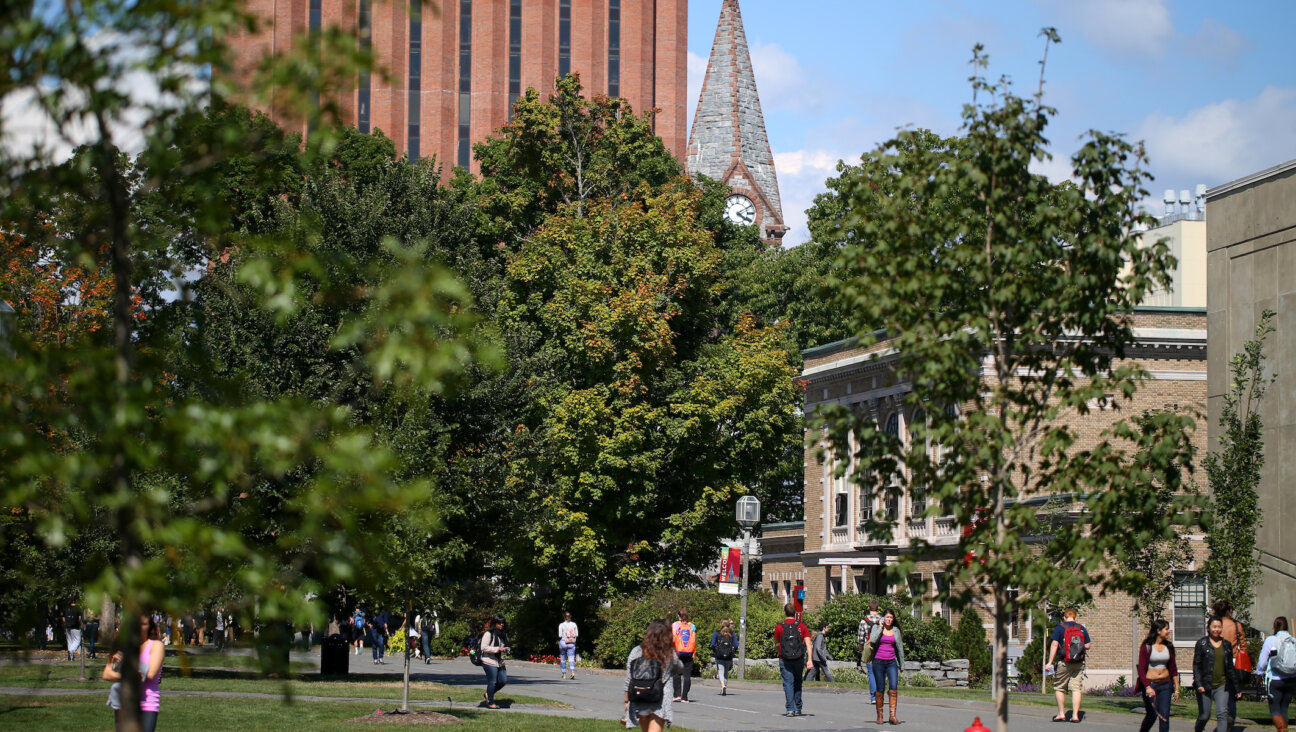Israel’s ‘Mystical City’ Opens Its Doors to Outsiders
The bus ride from Jerusalem to Tsfat takes three hours… but it can be a long three hours. On my most recent trip to the mystical city — a former backwater that, in the 16th century, became the most important center for Kabbalah in the world — I was stuck in the back of the bus between a very large man in a white-tassled yarmulke “reciting” (actually, shouting) psalms at the top of his lungs, a Chabad messianist trying to convince anyone who would listen that the Lubavitcher rebbe is the messiah (and is still alive, in hiding, in Brooklyn), and a half-dozen schoolgirls chattering in a mixture of English and Hebrew. It was the bus to Tsfat, all right.
Until recently, it was difficult to penetrate beneath the bizarre surface of this insane, beautiful, littered and seemingly perpetually-under-construction small town. Visitors to Tsfat — sometimes spelled Safed, a transliteration of the city’s Arabic name — would snap photographs of ornate synagogue walls, or browse through the artists’ colony in the city’s former Arab quarter. A few might venture down into the ancient cemetery, gazing at the candle-covered grave of Rabbi Isaac Luria, the mysterious kabbalist also known as the Ari Hakadosh, or The Holy Lion. And a brave soul or two might even dip into the icy waters of the Ari Mikva, fed by a mountain spring. But those seeking to engage with the town’s community of mystics, or learn some Kabbalah themselves, usually found the city to be a closed book. The mystics kept to themselves, and while you could hear them singing — or even, in the middle of the night, howling and crying in hitbodedut, or solitary “conversation” with God — it was difficult to get a glimpse of them, let alone learn more about their lives.
Today, Tsfat is opening up. There are dozens of opportunities for “outsiders” to come to know the community’s spiritual lifeblood. And while many doors remain closed, many more have opened within recent years.
As in many places, the most prominent outreach organization is Chabad-Lubavitch, the Hasidic sect associated, in America, with menorahs, mitzvah tanks and messianism. Chabad’s Tsfat outpost is a 12,000-square-foot learning center, hostel and library known as Ascent. Founded in 1983, Ascent runs weekend and weeklong seminars on Jewish mysticism and meditation, with the distinctive Chabad enthusiasm familiar to anyone who’s ever been stopped on the street and asked if he’d like to put on tefillin. When I visited, Ascent was running a three-day kabbalistic meditation seminar in English; the following week there was a pre-Rosh Hashanah weekend for Israelis.
But Chabad is not the only game in town, even if it remains the most obvious starting point for an individual’s spiritual journey. As Yehudit Goldfarb told me, “There’s a lot going on for ‘Westerners,’ now more than ever.” Goldfarb should know: She is the silver-haired creator of “Otiot Chayyot,” (“Living Letters”), a yogalike practice in which one moves one’s body into the shapes of Hebrew letters. She teaches the art in Tsfat as well as on trips to America. Goldfarb pointed me to the “Western Settlers” e-mail list, an electronic newsletter of all events spiritual, mystical or just plain Tsfat.
David Friedman, a kabbalah-inspired artist whose work is ubiquitous in Jewish Renewal and Reconstructionist circles, agreed. “I have groups coming through all the time,” he said. Including, to my surprise, a group of Reform rabbinical and cantorial students, not the crowd one would most expect to be learning kabbalah in the “mystical city.” Friedman offers crash courses in the kabbalistic Sefer Yetzirah, or The Book of Creation, an ancient text that purports to describe the deep structures of the universe, from the signs of the zodiac to the shape of the human body. And of course, he sells his artwork, like dozens of other Tsfat artists hawking everything from micrography to mezuzas.
One of the new entries in the Tsfat-for-Visitors roster is “Experience Tsfat,” run by the Nachal Novea Tsfat Fund, a New York-based foundation affiliated with the Breslov Hasidic sect. “Experience Tsfat” is something new for Breslov, a sect that, historically, has not been as active as Chabad in attracting new members and which, in marked contrast to Chabad, is not a centralized, hierarchical organization. But reclusive they’re not: One phone call asking about the program’s activity resulted in an invitation to Sabbath dinner at the home of Jonathan Lipschitz, the violinist in the popular Jewish band Simply Tsfat (the group’s albums have titles like “Be Happy” and “Fresh Air”) and the husband of one of the program’s organizers. As we walked to Lipschitz’s home from Tsfat’s enormous Breslov synagogue — imagine 500 black-clad men all shouting, dancing, singing and waving their arms in prayer and supplication — I asked whether this was the first time the Breslov sect had made this kind of an effort to reach out to newcomers. “This isn’t Breslov — this is Tsfat,” Lipschitz told me. “It’s for every Jew who wants to reconnect.”
Of course, Tsfat is still not for everybody. The Jewish quarter’s population is overwhelmingly Orthodox, and predominantly Hasidic. There are more than 30 active synagogues — but none offers an egalitarian prayer option. And because of Judaism’s prohibition on proselytizing, non-Jews may not feel especially welcome. Then again, in a quintessentially Tsfat moment, one yarmulke-wearing, apparently Sabbath-observing guest at one meal revealed that he was not a Jew but a “Ben Noach,” a gentile who observes the seven Noachide laws. He explained that he keeps the Sabbath, but starts either five minutes early or five minutes late in order to differentiate his practice from “real” Jewish observance. I thought to myself: “Only in Tsfat.…”
The most serious option for English-speaking spiritual seekers in Tsfat is probably the Shalom Rav yeshiva, which combines the seriousness of traditional learning with a character that is, well, very Tsfat. For example, its Web site includes a “Jamming and Chilling” page. It’s easy to spot the Shalom Rav boys on the street, playing drums or guitars, and sporting scraggly beards and large, hand-knitted yarmulkes. Shalom Rav and its women’s counterpart, Shaarei Bina, have a distinctively Hasidic flavor: They are as much about cultivating love and enthusiasm as about learning text. “Many young people today experience a full yeshiva education, yet feel uncommitted and uninspired,” said Shalom Rav’s Rosh Yeshiva, Rabbi Rafael Weingot. “The foundation of their faith needs strengthening, both intellectually and emotionally. Something deep inside must be stirred, to make Judaism real and meaningful for them.”
Another Tsfat option for those willing to make an extended commitment is Livnot U’Lehibanot (To Build and Be Built), which, since its founding 25 years ago, has grown from a small project intended to rebuild Tsfat’s crumbling old city to a huge, UJA-Federation-funded enterprise with Birthright Israel trips, five-month programs in Tsfat and Jerusalem, and even “national service” options for Israelis. Livnot is one of the rare Jewish organizations whose programs focus not on college students but on 20- and 30-somethings, and as such it tends to have a different flavor from the tie-dyed atmosphere of Shalom Rav. Yet even as Livnot has expanded far beyond the boundaries of Tsfat, it still has that emotional, spiritual tinge to it: It advertises one program as being for those who “would like their spiritual side to catch up to their professional career side.”
You don’t need to spend five months, though, to catch a whiff of the rarefied Tsfat air. There’s something immediate, and universal, to the place. I was sitting in a cobblestone plaza one night, when a tour group of entirely secular Israelis began singing “Lecha Dodi” (written in Tsfat by Rabbi Shlomo Alkabetz) and meandering through the city’s narrow alleyways. Maybe this is because Tsfat, more than other holy places, is tied to its natural features: You don’t need to be Jewish to gasp at the awesome sunset over Mount Meron, and you don’t need to read Hebrew to feel the power of the mikveh. For all the abstruse texts written here over the generations, perhaps the most enduring one is the place itself — a city built into a mountainside, gazing out over the Galilee. The spirituality is, literally, in the air. Arguably, Tsfat’s appeal isn’t entirely sensible, or even rational — but then again, neither is beauty, or art or love.
Jay Michaelson teaches Kabbalah and spirituality at synagogues, schools and online at learnkabbalah.com.
The Forward is free to read, but it isn’t free to produce

I hope you appreciated this article. Before you go, I’d like to ask you to please support the Forward.
Now more than ever, American Jews need independent news they can trust, with reporting driven by truth, not ideology. We serve you, not any ideological agenda.
At a time when other newsrooms are closing or cutting back, the Forward has removed its paywall and invested additional resources to report on the ground from Israel and around the U.S. on the impact of the war, rising antisemitism and polarized discourse.
This is a great time to support independent Jewish journalism you rely on. Make a gift today!
— Rachel Fishman Feddersen, Publisher and CEO
Support our mission to tell the Jewish story fully and fairly.
Most Popular
- 1

Fast Forward Ye debuts ‘Heil Hitler’ music video that includes a sample of a Hitler speech
- 2

Opinion It looks like Israel totally underestimated Trump
- 3

Culture Cardinals are Catholic, not Jewish — so why do they all wear yarmulkes?
- 4

Fast Forward Student suspended for ‘F— the Jews’ video defends himself on antisemitic podcast
In Case You Missed It
-

Culture How one Jewish woman fought the Nazis — and helped found a new Italian republic
-

Opinion It looks like Israel totally underestimated Trump
-

Fast Forward Betar ‘almost exclusively triggered’ former student’s detention, judge says
-

Fast Forward ‘Honey, he’s had enough of you’: Trump’s Middle East moves increasingly appear to sideline Israel
-
Shop the Forward Store
100% of profits support our journalism
Republish This Story
Please read before republishing
We’re happy to make this story available to republish for free, unless it originated with JTA, Haaretz or another publication (as indicated on the article) and as long as you follow our guidelines.
You must comply with the following:
- Credit the Forward
- Retain our pixel
- Preserve our canonical link in Google search
- Add a noindex tag in Google search
See our full guidelines for more information, and this guide for detail about canonical URLs.
To republish, copy the HTML by clicking on the yellow button to the right; it includes our tracking pixel, all paragraph styles and hyperlinks, the author byline and credit to the Forward. It does not include images; to avoid copyright violations, you must add them manually, following our guidelines. Please email us at [email protected], subject line “republish,” with any questions or to let us know what stories you’re picking up.
















